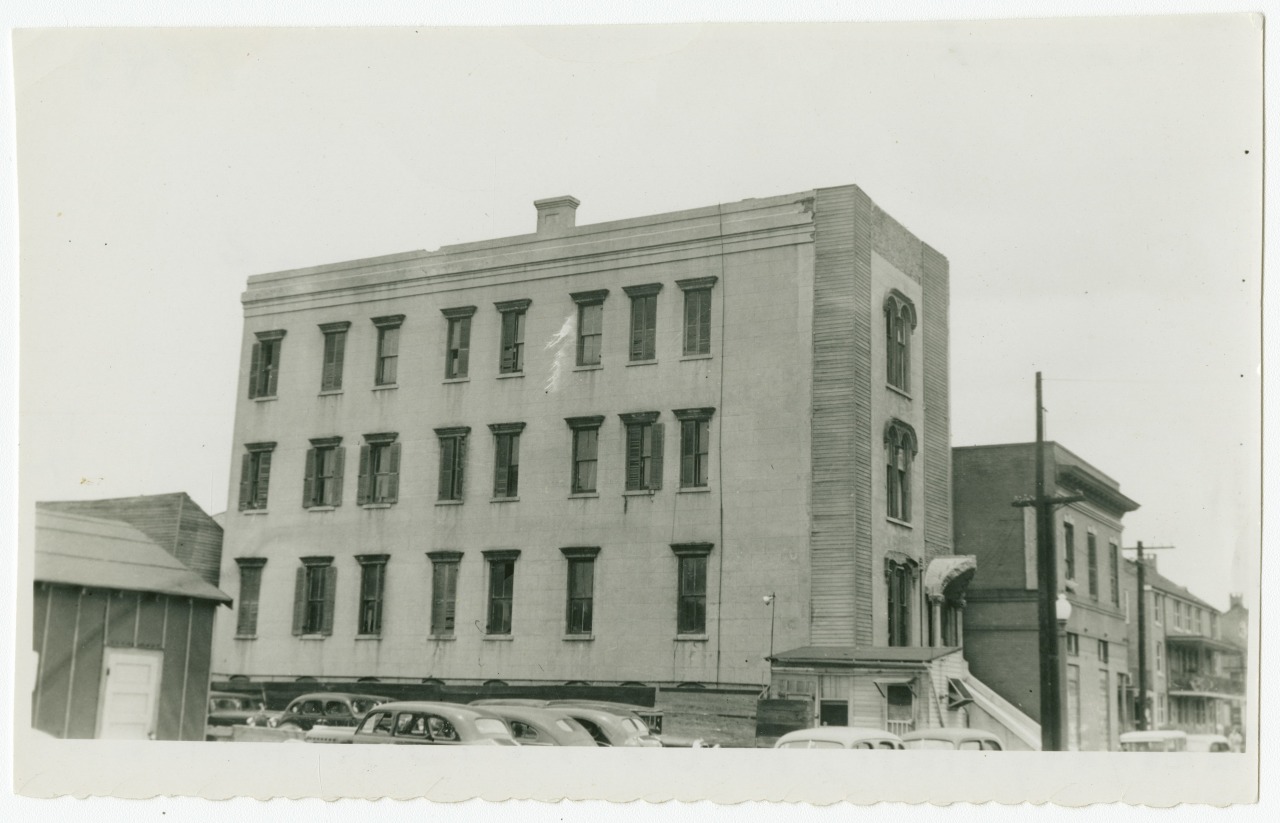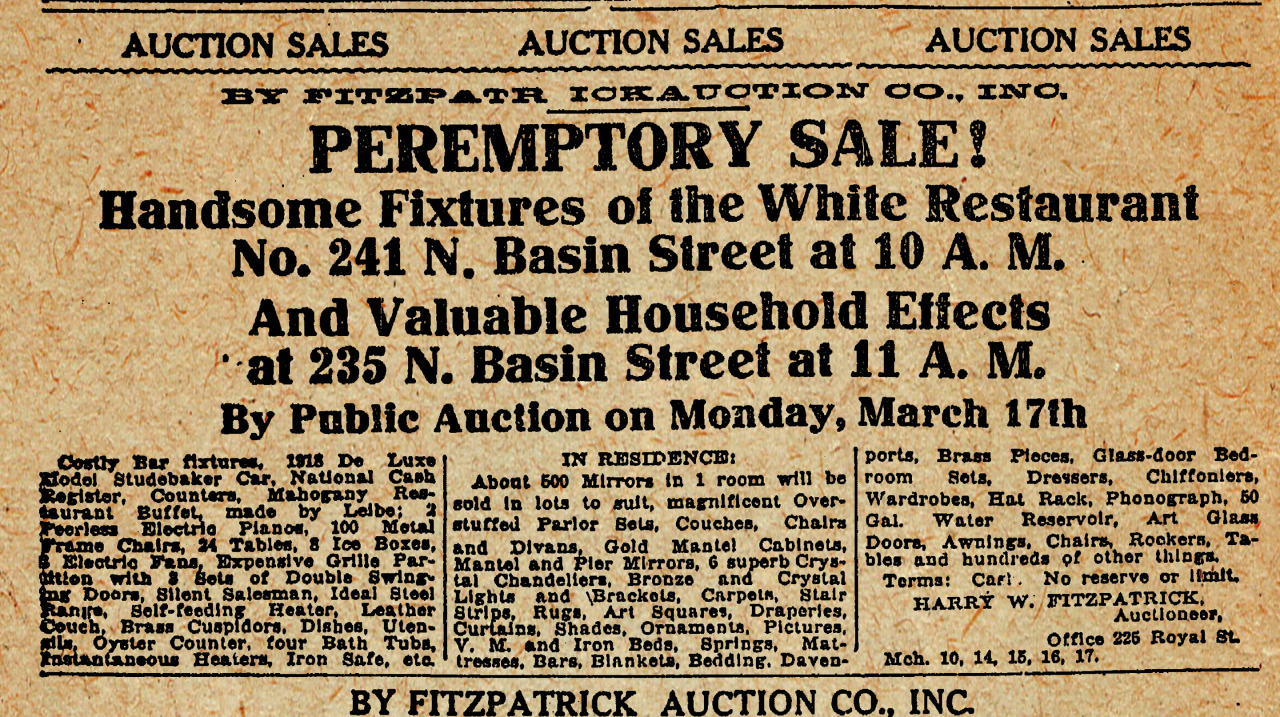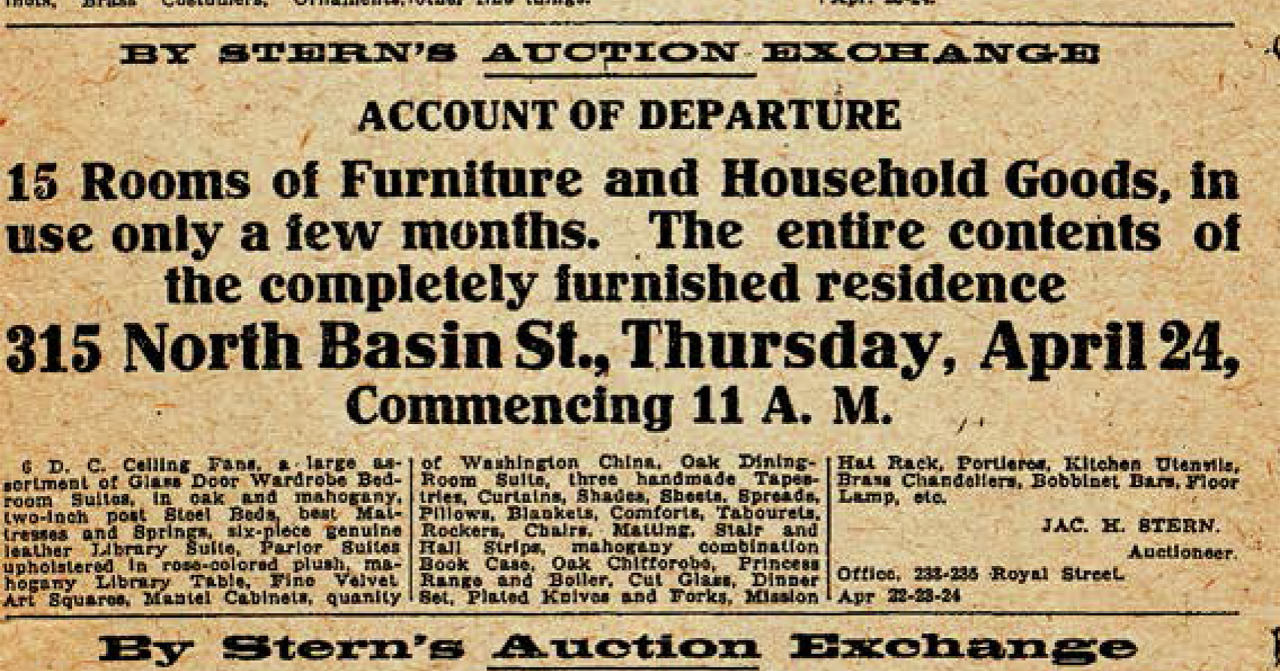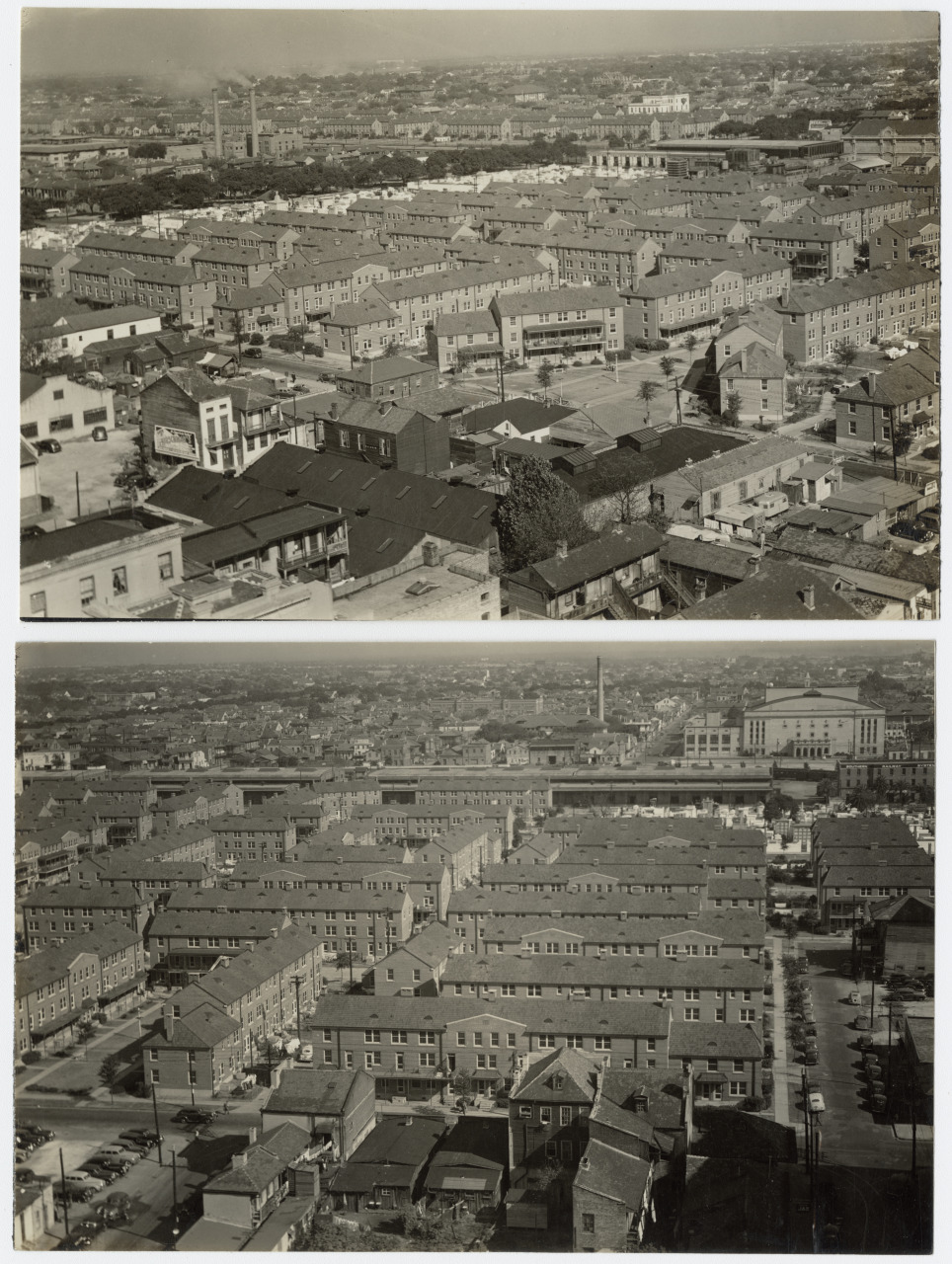Business sharply declined for madams after the District’s closure, forcing some of them to auction the contents of their mansions to resolve debts or raise funds to relocate. Although the madam Willie V. Piazza (1865–1932), also known as the “Countess,” was said to have auctioned her white grand piano at this time, she had amassed a considerable fortune and lived comfortably in her former brothel at 317 N. Basin until her death in 1932. Her story was an exception, however, and as the majority of madams left and houses closed, the Storyville neighborhood sank into poverty. It was considered a slum when the Housing Authority of New Orleans purchased much of the area during the late 1930s for construction of the Iberville Housing Project.

City of New Orleans v. Lulu White
March 1918
The Historic New Orleans Collection, 77-1486-RLThroughout her long career, Lulu White crossed paths with the law many times. The charges against her included assault, attempted murder, and trafficking in underage girls, but her lawyers usually managed to have charges reduced or dropped. Once Storyville closed, White’s influence, as well as much of her fortune, vanished. She was charged repeatedly for continuing to run a brothel under the guise of a hotel, in violation of the ordinance abolishing the District.
... In 1922, during Prohibition, she was convicted for possessing and selling liquor from her saloon at 241 N. Basin, a portion of which still stands. White lived at various addresses in and around the former Storyville for the remainder of her life, racking up arrests for numerous violations along the way. In 1929 she sold Mahogany Hall and her saloon to Leon Heymann, owner of Krauss Department Store. Ill, destitute, and awaiting another trial on charges of running a disorderly house, or brothel, White died in 1931.

235 N. Basin Street, formerly Lulu White’s Mahogany Hall
1943; gelatin silver print
The Historic New Orleans Collection, The William Russell Jazz Collection, acquisition made possible by the Clarisse Claiborne Grima Fund, MSS 520, 92-48-L.69

331–33 N. Basin Street, formerly Emma Johnson’s brothel
1935; gelatin silver print
by J. Wallace Paletou, Inc, appraiser
The Historic New Orleans Collection, gift of Clara duChiron Paletou, 92-32-L.1

Auction notice for sale of furniture and household goods from Lulu White’s Mahogany Hall
from New Orleans Times-Picayune
March 16, 1919

Auction notice for sale of furniture and household goods from May Spencer’s brothel at 315 N. Basin Street
from New Orleans Times-Picayune
April 23, 1919

Aerial view of Iberville Housing Project
1944; gelatin silver print
by Charles L. Franck photographers
The Historic New Orleans Collection, The Charles L. Franck Studio Collection, 1979.89.7578The Iberville Housing Project, completed in 1941 and occupying the greater part of Storyville’s footprint, grew out of state legislation in 1936 (authorizing slum clearance) and the United States Housing Act of 1937 (providing federal assistance to construct housing for low-income residents of cities).... The program was segregated, and the African American counterpart of Iberville, which was for whites only, was the nearby Lafitte Housing Project, built about the same time. Iberville’s 75 two- and three-story residential buildings contained 858 apartments. During the 1960s, Iberville’s viability was affected by the exodus of many residents to the suburbs, the construction of an elevated expressway a block from its northern perimeter, and diminishing federal support for maintenance. By 2011, only 441 of its units were occupied. A recent infusion of federal funding has prompted a new round of rehabilitation, involving the renovation of some of the historic buildings and the construction of new multifamily and townhouse buildings. In 2015 the Iberville Public Housing Development Historic District was listed on the National Register of Historic Places.
